3 Types of Yard Ponds You'll Love
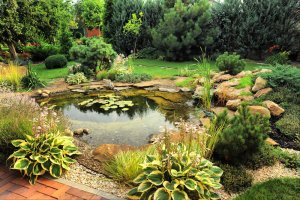
Do you like yard ponds as a means to decorate the exterior of your home? Read on, we’re going to show you three designs that you’ll love.
What kinds of ponds can I put in my yard? And also, of utmost importance, what are the aquatic plants and ideal fish for this ecosystem?
We recommend that when you design your pond, keep in mind the style that dominates your property. This way there’ll be harmony with the other decorative elements that you have outside.
Types of yard ponds
Would you like to learn the main features of the three major types of yard ponds? Well then, let’s begin!
Formal ponds
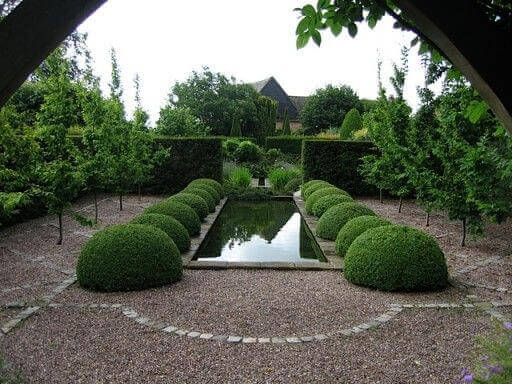
Greece is the origin of formal ponds. This is where the necessity of watering a garden and crops emerged. Today, ponds are decorative.
They are strategically located to maximize a balance in the environment. Taking advantage of perspective and geometric designs, this type of pond stands out for its calm water.
Formal ponds have a very odd way of integrating into the yard. They create a kind of mirror that reflects everything that surrounds them. This is why, in many cases, they don’t have any plants. And if there are plants, they are austere and elegant. It’s important to locate the plants according to symmetric criteria.
Although there are oval and round formal yard ponds, when opting for this style, square or rectangular shapes tend to be the rule. Be sure to consider this when installing this type of characteristic classic pond.
Elevated yard ponds
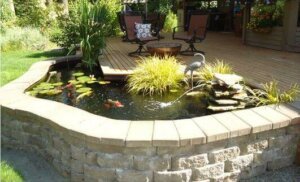
Elevated ponds function very well as a focal point of the yard. They bring the water, the plants, and the fish closer to the view and touch of the observer. These ponds offer areas to sit down as well.
Additionally, the design of this type of pond protects fish from their preditors. It also prevents children from falling into the water. On the other hand, having a low wall can be a temptation for children to run on it. We advise you to think about this when planning the design.
Together with the yard, they also serve to link areas and different levels. For example, a group of separate terraces with water that falls from one to another offers a unifying aspect.
If you don’t want problems with the bottom of the pond and maintenance, we recommend elevated ponds since there’s no need to excavate to construct them.
Circular yard ponds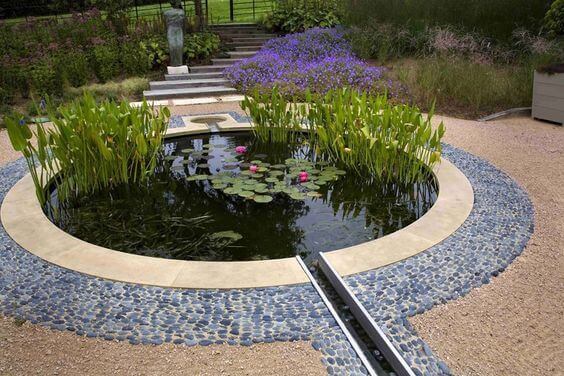
Round pools are different in comparison to square and rectangular ones. This is because of their position, which is usually isolated with fountains or sculptures at their center. This accentuates the circular shape that dominates the environment.
These pools may be in the ground or surrounded by a wall. Either way, their beauty, and elegance can be accentuated by incorporating plants and extending their borders to the edge. This reinforces their integration into the environment.
We must say that a round shape will also determine the items near the lawn. Strategically placing a small area of little flower pots and harmonious ground covers will make the pond stand out in the landscape.
What do I plant to go with the yard pond? 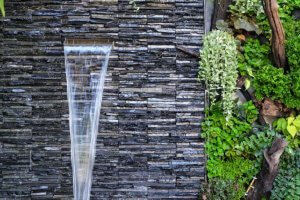
The humidity and the depth that the plants need will depend on the characteristics of each plant. We’ll suggest some that will be perfect.
Reeds and certain types of plants have to be in the water, but not very deep. Aquatic plants in deep water are put over rocks or other supports that help them reach the surface.
Plants with flowing foliage, such as water lilies, will go on the surface of the water. On the other hand, plants with submerged foliage will be ideal to oxygenate the pond.
What fish are suitable for different types of ponds?
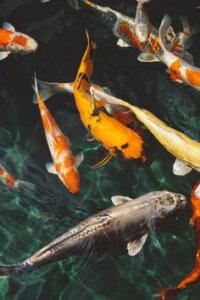
A while after filling the pond with water, fish can then be introduced. If there are already plants in the pond, you should wait a few weeks to add the fish.
To introduce the fish, you’ll need to put them in a bag of water for several minutes. This is so they become accustomed to the temperature.
Colorful fish, such as koi, of Asian origin, are ideal for these ecosystems since they can tolerate extreme temperatures.
Goldfish, in red, orange, and yellow, are very good for ponds due to their resistance and color. Also, large yard ponds can contain tenches. These live on the bottom and feed off of organisms that live in the mud.
As you can see, yard ponds can help you give more personality to the exterior of your home. They add a special touch to your yard. So go ahead and try adding one!
https://midecoracion.com/exterior/3-tipos-estanques-exteriores/
Do you like yard ponds as a means to decorate the exterior of your home? Read on, we’re going to show you three designs that you’ll love.
What kinds of ponds can I put in my yard? And also, of utmost importance, what are the aquatic plants and ideal fish for this ecosystem?
We recommend that when you design your pond, keep in mind the style that dominates your property. This way there’ll be harmony with the other decorative elements that you have outside.
Types of yard ponds
Would you like to learn the main features of the three major types of yard ponds? Well then, let’s begin!
Formal ponds

Greece is the origin of formal ponds. This is where the necessity of watering a garden and crops emerged. Today, ponds are decorative.
They are strategically located to maximize a balance in the environment. Taking advantage of perspective and geometric designs, this type of pond stands out for its calm water.
Formal ponds have a very odd way of integrating into the yard. They create a kind of mirror that reflects everything that surrounds them. This is why, in many cases, they don’t have any plants. And if there are plants, they are austere and elegant. It’s important to locate the plants according to symmetric criteria.
Although there are oval and round formal yard ponds, when opting for this style, square or rectangular shapes tend to be the rule. Be sure to consider this when installing this type of characteristic classic pond.
Elevated yard ponds

Elevated ponds function very well as a focal point of the yard. They bring the water, the plants, and the fish closer to the view and touch of the observer. These ponds offer areas to sit down as well.
Additionally, the design of this type of pond protects fish from their preditors. It also prevents children from falling into the water. On the other hand, having a low wall can be a temptation for children to run on it. We advise you to think about this when planning the design.
Together with the yard, they also serve to link areas and different levels. For example, a group of separate terraces with water that falls from one to another offers a unifying aspect.
If you don’t want problems with the bottom of the pond and maintenance, we recommend elevated ponds since there’s no need to excavate to construct them.
Circular yard ponds
Round pools are different in comparison to square and rectangular ones. This is because of their position, which is usually isolated with fountains or sculptures at their center. This accentuates the circular shape that dominates the environment.
These pools may be in the ground or surrounded by a wall. Either way, their beauty, and elegance can be accentuated by incorporating plants and extending their borders to the edge. This reinforces their integration into the environment.
We must say that a round shape will also determine the items near the lawn. Strategically placing a small area of little flower pots and harmonious ground covers will make the pond stand out in the landscape.
What do I plant to go with the yard pond? 
The humidity and the depth that the plants need will depend on the characteristics of each plant. We’ll suggest some that will be perfect.
Reeds and certain types of plants have to be in the water, but not very deep. Aquatic plants in deep water are put over rocks or other supports that help them reach the surface.
Plants with flowing foliage, such as water lilies, will go on the surface of the water. On the other hand, plants with submerged foliage will be ideal to oxygenate the pond.
What fish are suitable for different types of ponds?

A while after filling the pond with water, fish can then be introduced. If there are already plants in the pond, you should wait a few weeks to add the fish.
To introduce the fish, you’ll need to put them in a bag of water for several minutes. This is so they become accustomed to the temperature.
Colorful fish, such as koi, of Asian origin, are ideal for these ecosystems since they can tolerate extreme temperatures.
Goldfish, in red, orange, and yellow, are very good for ponds due to their resistance and color. Also, large yard ponds can contain tenches. These live on the bottom and feed off of organisms that live in the mud.
As you can see, yard ponds can help you give more personality to the exterior of your home. They add a special touch to your yard. So go ahead and try adding one!
https://midecoracion.com/exterior/3-tipos-estanques-exteriores/







